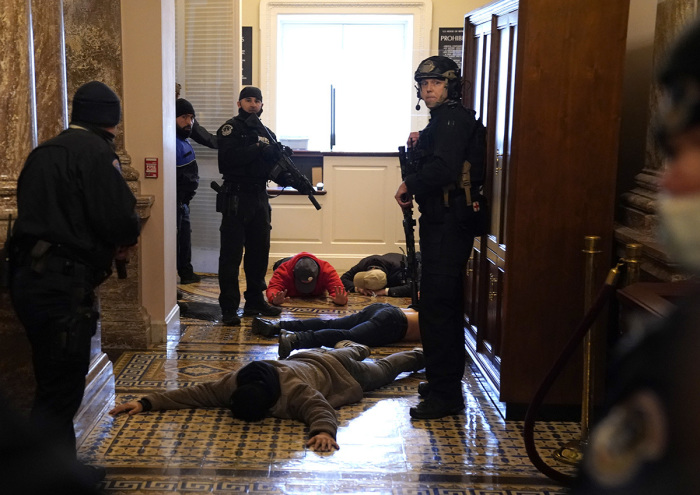Officer who fatally shot Ashli Babbitt at US Capitol in Jan. 6 riot ‘acted lawfully’: police

Authorities have cleared an unnamed police officer of wrongdoing in the death of Ashli Babbitt who was shot and killed while attempting to enter the House chamber at the U.S. Capitol on Jan. 6.
In an announcement on Monday, the U.S. Capitol Police said they were not going to discipline or release the name of the officer that killed Babbitt, an unarmed U.S. Air Force veteran who attempted to climb through a smashed door pane into the House. She was shot in the neck by the plainclothes officer who was inside the chamber.
The USCP Office of Professional Responsibility determined that the officer acted lawfully “and within Department policy” as “an officer may use deadly force only when the officer reasonably believes that action is in the defense of human life, including the officer’s own life, or in the defense of any person in immediate danger of serious physical injury.”
“The actions of the officer in this case potentially saved Members and staff from serious injury and possible death from a large crowd of rioters who forced their way into the U.S. Capitol and to the House Chamber where Members and staff were steps away,” stated the Capitol Police.
“USCP Officers had barricaded the Speaker’s Lobby with furniture before a rioter shattered the glass door. If the doors were breached, the rioters would have immediate access to the House Chambers. The officer’s actions were consistent with the officer’s training and USCP policies and procedures.”
The announcement comes months after the U.S. Attorney’s Office for the District of Columbia and the Civil Rights Division of the U.S. Department of Justice likewise announced that they would not pursue criminal prosecution of the officer who fatally shot Babbitt.
“The focus of the criminal investigation was to determine whether federal prosecutors could prove that the officer violated any federal laws, concentrating on the possible application of 18 U.S.C. § 242, a federal criminal civil rights statute,” stated the Justice Department in April.
The Justice Department went on to state that “the investigation revealed no evidence to establish that, at the time the officer fired a single shot at Ms. Babbitt, the officer did not reasonably believe that it was necessary to do so in self-defense or in defense of the Members of Congress and others evacuating the House Chamber.”
On Friday, Reuters reported that the FBI had found no evidence to suggest that the Capitol riot was a coordinated attack by supporters of former President Donald Trump.
"Ninety to ninety-five percent of these are one-off cases," a former senior law enforcement official told Reuters. "Then you have five percent, maybe, of these militia groups that were more closely organized. But there was no grand scheme with Roger Stone and Alex Jones and all of these people to storm the Capitol and take hostages."
Babbitt, 35, was unarmed when she joined hundreds of Trump supporters who stormed the Capitol during a joint session of Congress meant to certify the results of the 2020 presidential election. While some people forced their way into the Capitol, others were allowed in by Capitol police without incident.
She was shot and killed by the unnamed police lieutenant when she and others tried to get into the Speaker’s Lobby outside of the House chamber, which had been barricaded for the sake of protecting the members of Congress.
Some critics, among them retired police sergeant Betsy Smith, spokeswoman for the National Police Association, have questioned if the shooting of Babbitt was justified.
In an interview with NTD's “The Nation Speaks” back in April, Smith argued that there were many unanswered questions regarding the circumstances of the shooting.
“I think that if the Justice Department has said that that officer should not be charged, then that’s fine. But I think that the American public deserves to know the details of why deadly force was deployed, because there are very strict rules when we use deadly force,” she stated at the time.





























